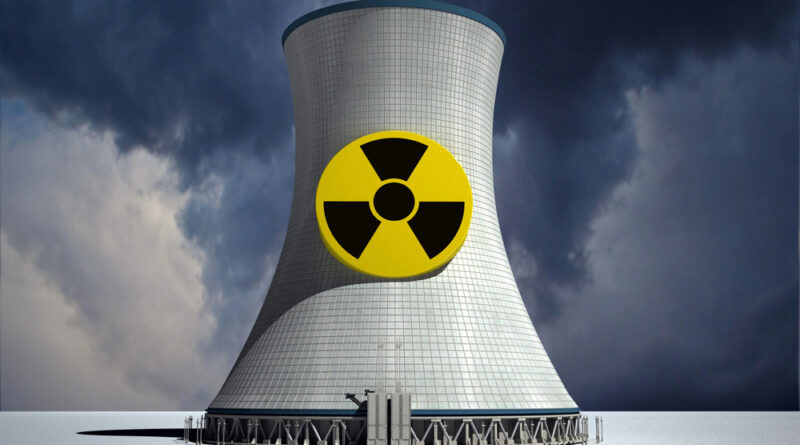Reviving the Reactors: How AI is Reinventing Nuclear Power
As the world’s demand for electricity skyrockets, fuelled in part by the voracious energy appetite of AI-driven data centres, a renaissance in nuclear power is underway. In an era when artificial intelligence is reshaping nearly every industry, nuclear reactors, many of which were designed decades ago, are receiving an unexpected high-tech makeover. And as a self-confessed tech nerd, I’m excited to dive into how AI is poised to modernise an aging infrastructure in a field that many assumed was stuck in the past.
With nearly all of the nation’s 94 operating nuclear reactors having had their licenses extended, it’s clear that America’s nuclear fleet still plays a vital role, providing roughly 20% of the country’s electricity. However, many of these reactors are relics from an earlier era—constructed over 30 years ago, with operating systems that hardly resemble today’s digital landscape. The challenge is clear: update these aging facilities to meet the demands of a modern energy grid while maintaining their safety and efficiency.
Enter the AI-based tool developed by Argonne National Laboratory. Known as PRO-AID, short for Parameter-Free Reasoning Operator for Automated Identification and Diagnosis, this innovative solution represents a leap forward for nuclear reactor management. With its roots in generative AI and large language models, PRO-AID is engineered to perform real-time monitoring and diagnostics, bridging the gap between legacy systems and today’s technology.
Imagine a control room where every sensor, every piece of equipment, and every operational parameter is under constant surveillance by an AI that not only alerts operators to potential issues but also explains what’s happening in a language they understand. That’s exactly what PRO-AID is designed to do. By using automated reasoning—an advanced form of AI that encodes knowledge with mathematical logic—this tool mimics the analytical process of a seasoned human operator. It sifts through torrents of data to detect anomalies, flagging issues before they can escalate into serious problems.
This sophisticated system not only ensures more consistent safety measures but also reduces the reliance on extensive human oversight. As veteran operators retire, the industry is facing a potential skills gap that AI can help bridge. With tools like PRO-AID, the hope is to lessen the burden on operators by automating many of the routine diagnostic tasks, essentially standardising the performance checks of these nuclear behemoths.
One of the most compelling aspects of this development is its timing. The global surge in interest for AI has led to a veritable power frenzy among data centers. These centers, which house state-of-the-art computing clusters, are predicted to double their consumption as AI applications continue to expand. Tech giants are already exploring partnerships with nuclear power providers, aiming to secure long-term, reliable electricity sources. In this context, updating and modernising nuclear reactors isn’t just about safety—it’s about scaling energy infrastructure to meet new technological demands.
Modernising a nuclear facility is not as simple as flipping a switch on an outdated system. For many legacy plants, integrating advanced digital monitoring tools requires substantial overhauls, which come with their own set of challenges and costs. While some forward-thinking facilities are embracing these changes to maximise efficiency, others face the tough decision of whether the investment is worth it, especially when considering downtime needed for upgrades. The rollout of tools like PRO-AID may serve as a model for how even the oldest reactors can be retrofitted with technology designed for the future.
From my perspective as a technology enthusiast, the integration of AI into the nuclear power sector is a thrilling confluence of old and new. It’s a prime example of how cutting-edge machine learning can rejuvenate established technologies, providing a blueprint for innovation in sectors that many prematurely wrote off as obsolete. The shift isn’t just about maintaining the status quo; it’s about revolutionizing how we generate power in a world that demands both sustainability and efficiency.
As nuclear startups, backed by visionary entrepreneurs, continue to leverage advanced computer modeling and AI-based design, we can expect a new generation of reactors that are safer, more efficient, and far better integrated into the digital ecosystem. Whether through the refined monitoring capabilities of PRO-AID or entirely new reactor designs conceived in the digital realm, the nuclear power industry is on the cusp of a major transformation—one that promises to meet the energy needs of our modern, data-driven society.
In the end, the revival of nuclear power powered by AI is not merely a technological upgrade; it’s a strategic pivot that recognizes the converging demands of energy, safety, and computational prowess. And for us tech nerds, it’s a fascinating journey to watch—and be a part of—as legacy systems evolve to support the innovations of tomorrow.
Photo Credit: DepositPhotos.com

